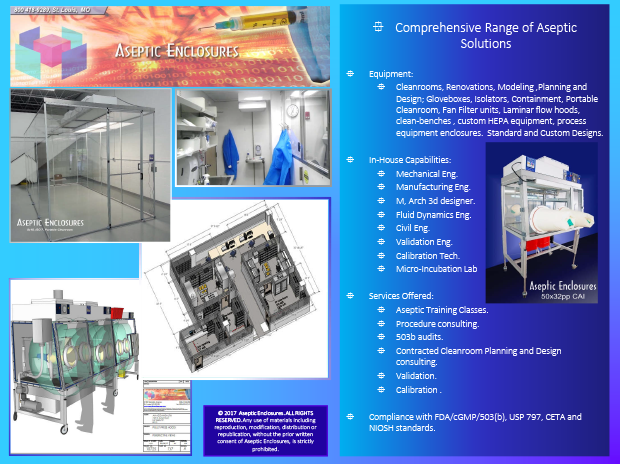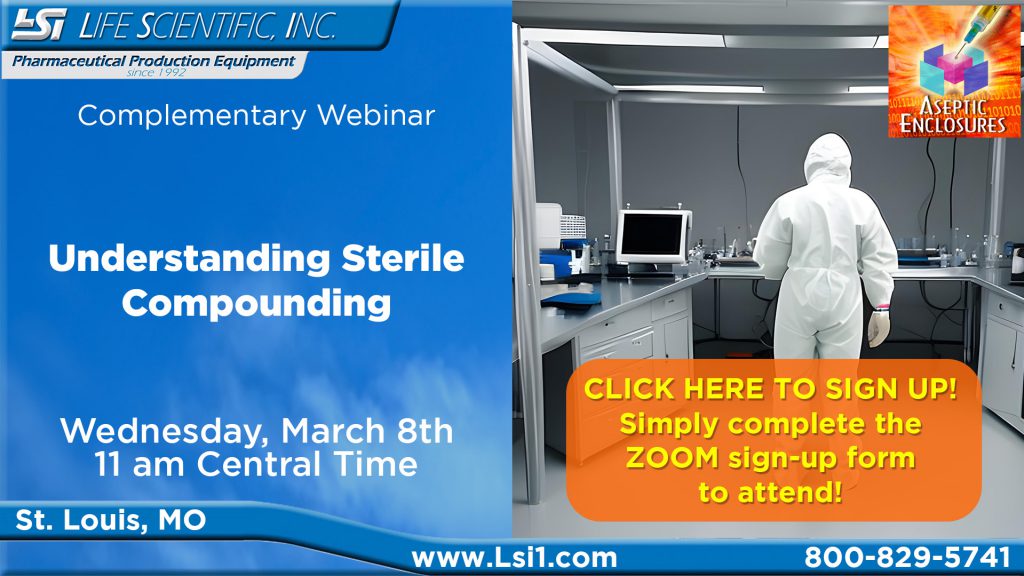Developing an effective compounding strategy is critical to ensuring patients have access to properly compounded medications, but because each organization’s needs differ, a one-size-fits-all solution cannot be applied to every hospital. A careful evaluation of the institution’s requirements, the available infrastructure for compounding medications in-house, and any registered 503B compounding facilities in the vicinity with a capacity to serve the hospital, is necessary to identify an effective strategy.
Overlook Medical Center (OMC), part of the Atlantic Health System, is a 504-bed, not-for-profit, tertiary hospital in Summit, New Jersey. Atlantic Health System consists of five hospitals in the northern New Jersey area, including a children’s hospital, as well as a rehabilitation center, a home care service, and a hospice service. OMC has four infusion centers with pharmacies, as well as the main pharmacy; the pharmacy department comprises 86 full– and part-time employees.
Of hospital pharmacy’s myriad responsibilities, perhaps none is more critical to positive patient outcomes than ensuring patients receive safe, compliantly compounded medications. After the New England Compounding Center (NECC) meningitis outbreak in 2012, the OMC pharmacy department and several other pharmacies in New Jersey received visits from the State Board of Pharmacy to identify any deficits in USP <797> compliance. This visit prompted OMC’s operational team to reevaluate its compounding procedures, develop a comprehensive cleaning schedule, and improve our personnel-training program.
Identifying Gaps in the Compounding Process
The OMC IV room compounds approximately 180 custom doses daily—comprising low– and medium-risk adult, pediatric, and neonatal compounds—and batches approximately 350 ready-to-use products. As OMC does not perform endotoxin or pyrogen testing to extend beyond-use dating (BUD) for compounded sterile preparations (CSPs), we use the BUDs cited in USP <797> for CSPs produced in-house. (It is important to note that if the proposed revisions to USP <797> are adopted, the criteria for extending BUDs may change based on enhanced personnel, air, and surface testing requirements. These changes will require additional personnel and environmental testing, as well as policy changes.) The OMC infusion centers compound approximately 50 chemotherapy doses and 40 doses of nonhazardous drugs each day. High-risk compounds, certain anesthesia syringes and IV piggybacks, oxytocin bags, and TPNs are outsourced to a registered 503B facility.
A clear understanding of current practice is a prerequisite to implementing improvements, so OMC performed a gap analysis to identify deficiencies in our process, as well as appropriate corrective measures. None of the gaps exposed were egregious, but staff education and training were identified as an area that could be improved upon. Our first goal was to correct the deficits that required minimal corrective action, such as updating policies and procedures (P&Ps). Sterile compounding P&Ps were revised to closely align with USP <797> standards. Fortunately, no deficits were identified during the gap analysis that required any facility changes, such as procuring additional primary engineering controls (PECs) or building a new cleanroom.
Our gap analysis determined that using the syringe pullback method to verify a compound’s accuracy was insufficient and not the best practice. Thus, we immediately stopped using this approach for all hazardous drug (HD) compounds and began employing a visual method, whereby a pharmacist reviews the dose in the syringe before it is injected into the bag. Because all HD compounding occurs in a negative pressure cleanroom, verification of HD doses requires that the pharmacist don personal protective equipment (PPE) and perform proper hand hygiene prior to entering. Although this process has increased the time required to prepare medications, the safety benefits of the new procedure outweigh the increased time required.
Our second goal is to completely eliminate the syringe pullback method for both hazardous and nonhazardous drugs by incorporating IV workflow management software. Pharmacy’s request to purchase this technology is currently under review by OMC administration, with a decision expected by Q2 2016.
In the main IV room, just four IV batches are printed at a time, which helps reduce waste that can occur when a provider discontinues an order and a dose is returned. First doses and custom doses are prepared immediately after the label prints, and manufacturer-prepared proprietary bags are prepared in batches and stored in an area adjacent to the anteroom. After each of the four batches print, pharmacy technicians gather the proprietary bags, label them, and await pharmacist review. The bags are then sent to the units every hour.
Staff Training is importnt part of effective compounding strategy
Staff training was an area identified in the gap analysis for improvement. Robust staff training is critical to managing an effective compounding program, so ensuring that pharmacists and technicians are competent is a priority for OMC.
Responsibility for hiring, educating, training, testing, developing competencies, and overall supervision is shared by the lead IV pharmacist and the pharmacy manager. The IV room supervisor monitors and maintains the general daily operation of the IV room and ensures compliance regarding cleaning, maintenance, training, and semi-annual certification of the PECs and secondary engineering controls (SECs). Pharmacy staff rotates through the IV room, but the staff is dedicated to the oncology satellite.
Pharmacists and pharmacy technicians are trained and oriented to general pharmacy operations first, which typically requires about 4 to 6 weeks, and can then work in the IV room. IV training consists of didactic education, followed by a written examination requiring a score of 90% or higher to pass. Following the examination, and depending on prior IV room experience, each staff member is partnered with a seasoned IV room staff member to receive experiential training for 2 to 4 additional weeks.
Once the employee understands the IV room workflow and is confident in the skills necessary to compound CSPs, he or she must pass sterility and gloved fingertip tests before being authorized to work alone in the IV room. The tests are performed by the lead IV room pharmacist, who also is responsible for reviewing aspects of USP <797>, such as cleaning, documentation, and proper cleanroom operations (including, but not limited to, air changes per hour [ACPH]; ISO Class 5, 6, 7, and 8 differences; proper temperature and humidity in the classified areas; PPE requirements; and hand hygiene).
The employee is expected to fully understand the operational expectations prior to passing the practical exam. Additionally, the sterility media fill and three sets of gloved fingertip disks must not show any colony forming units (CFUs). If CFUs occurs, the employee must repeat the practical exam at a later time, following retraining in the area that resulted in the failure. Those that pass the practical exam are authorized to work in the IV room, supervised closely by the lead IV room pharmacist for an additional 6 months.
Technicians who pass the initial IV training and express an interest in compounding HD drugs must wait at least 6 months before chemotherapy preparation training is considered. During the 6-month period post-IV training, the lead IV room pharmacist observes the employee to assess skills and identify gaps in general IV compounding knowledge.
Those chosen for chemotherapy preparation training learn how to receive, store, handle, prepare, and transport chemotherapy, as well as the proper use of a spill kit and the donning of additional PPE. Effective cleaning practices, specifically the use of the two-step process for decontamination and deactivation of the PEC, are among the last skills taught.
New pharmacists further their training in the clinical area in collaboration with the lead oncology pharmacist. Training consists of cancer-specific competencies, medication therapy management (MTM), lab monitoring, and reviewing cancer protocols.
Outsourced Compounding Considerations
While OMC compounds many medications in-house, outsourced compounding also plays a significant role in our compounding strategy. Therefore, performing due diligence with potential vendors is critical to ensuring the quality and safety of outsourced products.
All outsourced vendors must complete the ASHP Outsourcing Sterile Products Preparation: Contractor Assessment Tool (available at www.ashpfoundation.org/sterileproductstool) prior to working with the hospital; in addition, a site visit to the vendor’s facility is mandatory. During the site visit, the lead IV room pharmacist or pharmacy coordinator focuses closely on the potential vendor’s compounding process to ensure compliant practices.
Red flags include a lack of documentation of training and testing for competency, failure to provide viable air and surface sample results, a cleanroom that does not appear clean, a lack of professionalism and staff competency (eg, they do not wear appropriate PPE or perform proper hand hygiene, the atmosphere in the cleanroom is not quiet and professional), and a lack of QC measures in place to verify compounding accuracy.
Although a best practice would be to revisit each outsourced vendor occasionally, we have not yet implemented this step. Whenever possible, we prioritize outsourced vendors that are local to minimize travel time. In addition, networking with other institutions that already use specific vendors is useful to gain recommendations. All outsourced compounding providers must be FDA-registered as 503B vendors to be considered.
Approved vendors must provide quarterly reports to the pharmacy coordinator and the lead IV room pharmacist for review to ensure ongoing compliance. These reports are carefully studied to ensure compliance with USP <797> standards; questions or clarifications are directed to the outsourced pharmacy manager for resolution. In addition, approved vendors must provide immediate notification if a problem is suspected with their CSPs.
Future Goals
Moving forward, OMC’s goals include aligning sterile compounding P&Ps throughout the health system and standardizing cleanroom operations by opening a centralized IV room to serve the entire health system. This goal is currently under consideration by the C-suite; a final decision will depend on the expected ROI, equipment and personnel requirements, and the state’s regulations governing such a facility.
The lead IV pharmacists from all sites, management representatives, and C-suite representatives will undertake the task of developing and adopting standardized P&Ps. The health system also is investigating the possibility of adopting IV robotics to streamline compounding efficiency.
The visit from the New Jersey State Board of Pharmacy prompted OMC to reevaluate in-house compounding practices, as well as the requirements for choosing an outsourced compounding vendor. Although one solution will not fit every hospital, closely aligning an organization’s compounding strategy to ensure compliance with USP <797> and USP <800> requirements is integral to safe medication-use processes.
If you have any question, Simply fill out the contact form on this page or write us on Linkedin and we’ll get back to you as soon as possible.



Nice article! All your strategy is is quite great and helpful. You gave us almost all information about this pharmacy service. Some of your tips inspired me a lot because each has a great value. Thanks for sharing this amazing blog with us.